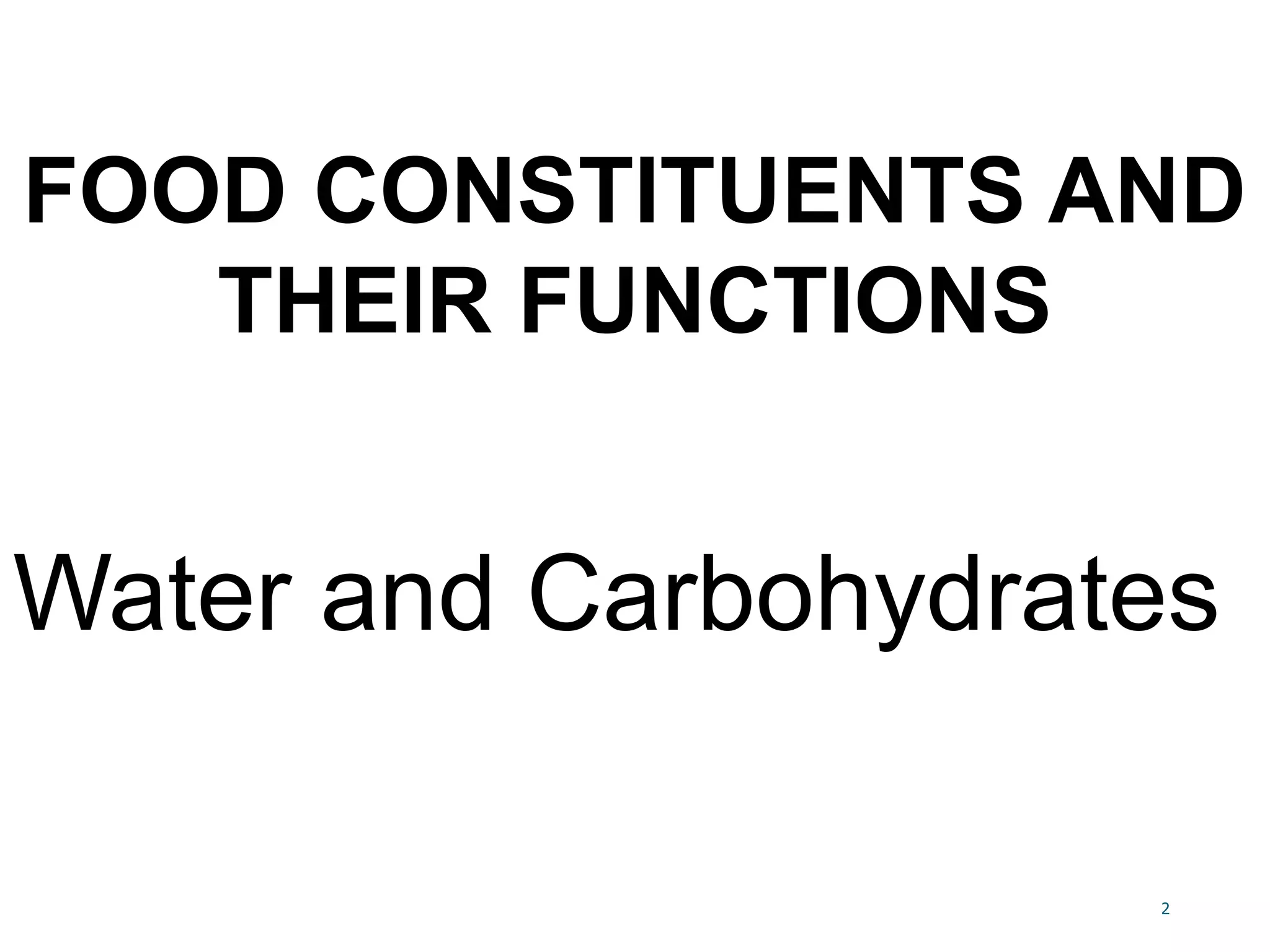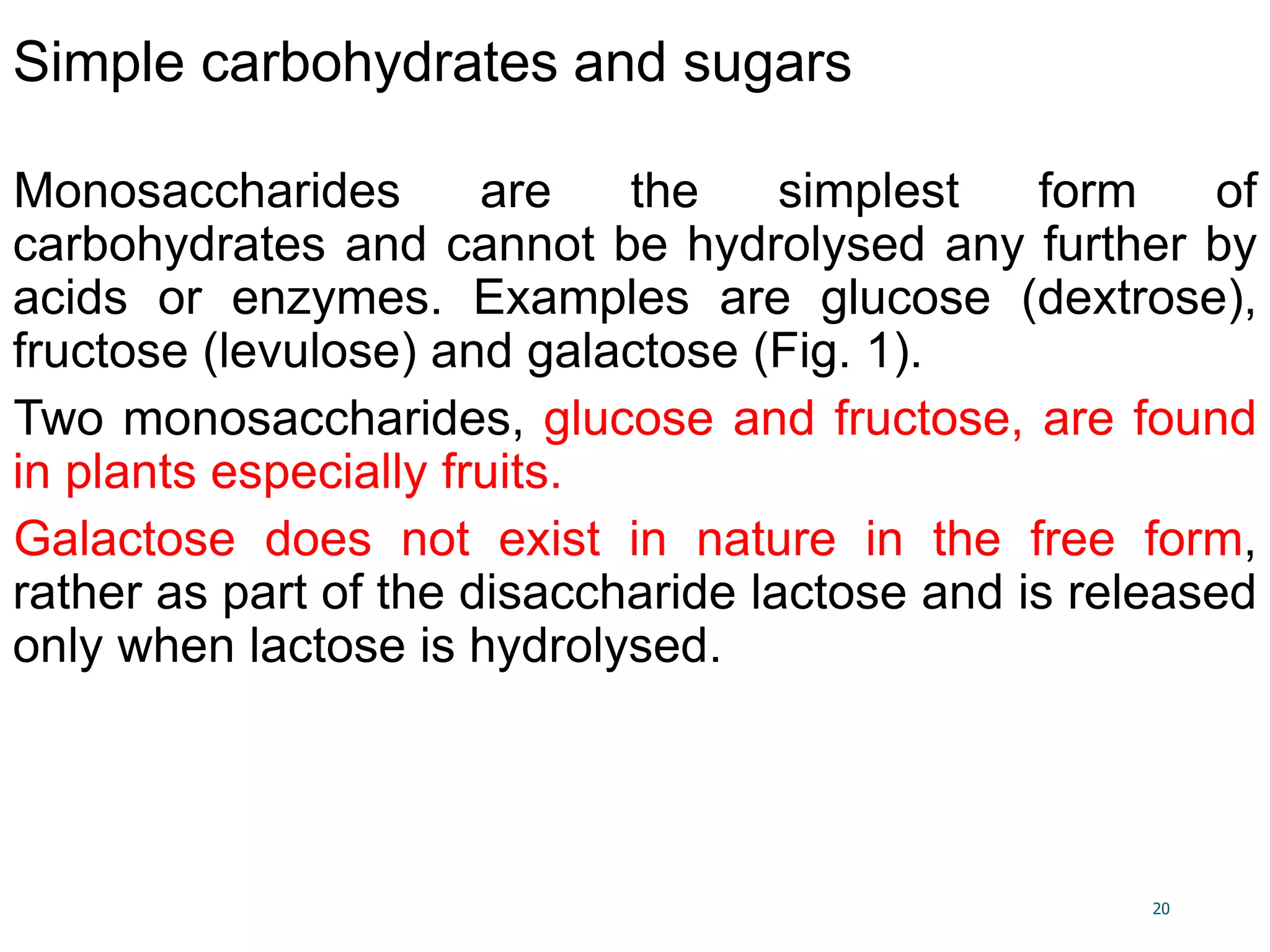Water is the most abundant constituent in foods and plays several important roles. It exists in foods in free, physically bound, and chemically bound states. Carbohydrates are another major constituent and include simple sugars (monosaccharides and disaccharides) and complex carbohydrates. Simple sugars provide sweetness and serve as an energy source, while complex carbohydrates are structural components in plants and storage molecules in some foods. Together, water and carbohydrates make up a large portion of most foods and impact properties like shelf life, texture, and flavor.



































